Sovereigns
Lavimea
Lavimea, land of the roaming hordes and pillaging raiders. There is no rule or power structure governing this land. An unruly mob of ravagers and scavengers would be a fitting term for these gangs. Lavimeans are not farmers, traders or fishermen, they rely on taking what they need and they are constantly on the move to terrorise the lands around Lavimea. Fighting amongst themselves is also quite common, the Lavimeans go looking for violence they really don't care to who they apply it to. They are simililar in behavior to the Fenlins in Ushar, but they lack any kind of coordination or real war skills. Tribes roam lavimea freely and with no central rule or coordination, in what was once the mighty Aurean Empire, the tribes terrorrise their neighboors with little or no consequence.
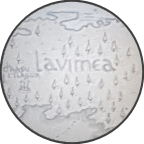
More about Lavimea
Social: Not at all. Approaching any one tribe, group or warlords will most likely get you robbed, raped and killed, in random order. They are ever suspect of strangers and usually make short work of any such they come upon. Social life within the group is unknown as no scholars have been allowed to study them. There appears to be some form of social ranks with the groups, apparently based on how feats of strength possibly many enemies they have killed. There are no cities in Lavimea, a fairly large town called D'hasu T'llagur lies on the northern shore of the Blainshaw Ocean not too far from Rinuncarta, and here you can find something resembling city life and civilized behavior. But make no mistake about D'hase' T'llagur, you are still in Lavimea, and you can easily get into trouble.
Geography: The region of Lavimea is entirely covered in spruce and pine forest only to give away to small swamp areas now and again and strecthing all the way to the huge Blainshaw Ocean. The great Fellmoore river runs through lavimea, and empties out into the Blainshaw Ocean. The area around Felrmoor River is the only viable farmland in the area but the Lavimeans are not farmers. In the far north of Lavimea the snow is almost permanent and once the peak of summer is past the area turns into a deep frozen zone with no human life.
Military: None.
Trade: There are very few towns and villages, but the few settlements do make trade as well as travel outside of Lavimea, to Feinland to barter in Rinuncarta. For the roaming tribes life is simpler, you should consider yourself lucky keeping your life in turn for all your belongings if you meet any of them.
Religion: Unknown, there are many shrines and holyplaces in the huge forests of Lavimea, but they are unlike anything found in other faiths, and quite frankly it is hard to tell if they religious monuments or simply navigation signals or communication posts.
Magic: The magic has been pushed backed for centuries in Ardensis, and sane creatures of the realm has simply left or gone into hiding. The very North of Lavimea is one of the places they have fled into. If you survive the Lavimeans surely the beasts in the snowclad mountains will get you should you go looking.
Lukka Kadesh
Most of the peninsula that is Lukka Kadesh is covered by either desert or dense old forest. The desert people live nomadic lives travelling from oasis to oasis in the desert. They know the desert intimately and they always know where water can be found, they also are extremely elusive and hard to find. The rest of the populace lives in small villages on the coast or close to it, they aren't nomadic and stay homebound. The villagers live of products of the dense forest but no one lives there, at least no one sane. Population on the peninsula is sparse, but the placee sees a lot of trade because of it's strategical importance and central hub for trade from all of the Llaene Kingoms, from Feinland and Astrantia in particular.
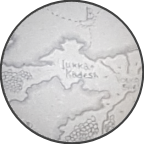
More about Lukka Kadesh
Social:
Geography:
Military:
Trade:
Religion:
Magic:
Betulus and Hirtella
Once the Aurean Empire fel and the regions was left to their own rule, Betulus and Hirtella found each other quickly and swore to defend each other, and provide each other the safety that was previously delivered by the empire. The two regions are quite different in geography as well as socialness but they have shared a common bond throghout the centuries in the Huge Lake Eryn that lies in center of the two regions. Several other big lakes, river systems, marshes and lowlands cut through the regions making Betulus and Hirtella a wet place to grow up. At the same time centuries of sedimentation has created very fertile farmlands and the river systems are excellent waterroads for transporting goods and people. Everything evolves around Lake Eryn and Lake Aios and the two regions share the temple city of D'nyen that lies south of these two lakes. The biggest town, and what is for all purposes and intent its capital, is called Reib, located in the very south of Lake Aios. Reib doesn't really look like a capital, there are no castles or manors and the headcount at its busiest rarely exceed ten thousand. The relationship between Betulus and Hirtella is way older than the Aurean empire and they have always known how to get along, they are pragmatic people and they have few but strict rules all managed and orchestrated in Reib.
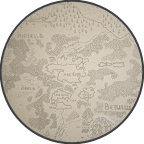
More about Betulus and Hirtella
Social:
Geography:
Military:
Trade:
Religion:
Magic:
Lavistre
The folks in Baros'tir Highlands calls this area "Selon'els", which means "place with no soul", and there isn't much alive in this region to even warrant giving it a name. But for folks from the old Aurean empire it was always Lavistre, that area no one cared about north of Betulus and Hirtella. There are indeed very few locals, in fact in the summer season influx of hunterers and gatherers from Betulues and Baros'tir Highland more than triple the population of Lavistre. The real locals are nomadic and stay within tight knit families, they are a rare sight, and they usually stay out of sight, especially when the summer opens up the territory. The areas close proximity to the northern icecap means that the area is deep frozen all but 3 months around the peak of summer. Once the colds hit only the locals remain and have the skill to survive. We don't know anything of what they do or what may transpire in those dark and cold winters days and nights, and the locals don't share their stories or memories.
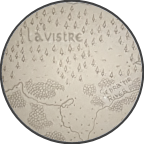
More about Lavistre
Social:
Geography:
Military:
Trade:
Religion:
Magic:
Pisifera
Formerly a part of the aurean empire now a sovereign territory, ruled by local families. Pisifera has recovered from the fall of the Aurean empire, they did so quickly but they now stand alone with only the desperate hope of Betulus and Hirtella coming to their aid when invaders come knocking. Pisifera has no real defensive capabilities and has always relied on the Empire for security, the only thing that keeps the place at relative peace is fairly secluded location with only the pillagers from Surunghat to worry about. The Fenlins don't roam this far North from Ushar and the enemy in the North in Lavimea doesn't roam this far south, so all they have to worry about is what comes from the west out of the swamps in Surunghat.
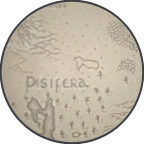
More about Pisifera
Social:
Geography:
Military:
Trade:
Religion:
Magic:
Aurea
A former empire that at its peak spanned Castanum, Pisifera, Betulus and Hitella. At its peak the empire was very powerful and very rich, it controlled all trade in the west of Ardensis. Even Alfell, Marbrek and Westshore where at that time under the empire control. The empire even found ways to successfully contain the Fenlin and make sure that raids would travel south into Rhay'ady and never north. Even the Fenlins understood the clear messages sent by Aurea, after several campaigns led by Castanum's armies into the area, the Fenlins stopped coming. The Aurean empire was founded 2348 BGS and ended xxxx. It ended not in a bang, but more of a slow sizzling loss of control and power and made the empire crumble away in the time span of a single generation. Once its empire crumbled and all that was left was Aurea itself, the region closed around itself and retracted into the mountains. Aurea became a place of things forgotten and glories past, only remembered by a few locals. The former glorious capital of Kel'Sol is crumbling and but a shade of it's former self but still worth a visit
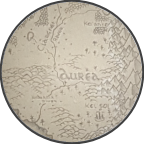
More about Aurea
Social:
Geography:
Military:
Trade:
Religion:
Magic:
Castanum
Formerly governed by the Aurean empire the region is now on its own and its future is insecure. To their south they have the Fenlins from Ushar that come knocking whenever they want and take what they want. North of them to the south east the clans from Nibartus are no better although they are busy themselves keeping the Fenlins at bay. Castanum is alone on the outer frontier of the old empire and desperately seeking company. On-going negotiations with the Allbrek Trade alliance has left them with some hope of protection but as of now they are tasked with their own defences. Castanum under the empire was heavily militarised, as all their treaths and enemies where in the south, and Castanum was an extremely good choke point for defending the empire. When the empire fel and the armies crumbled Castanum was hit extra hard and they lives changed dramatically. Suddenly they were not defenders of an empire, suddenly they were not the outer frontier of an empire, all garrisons forts and outposts where abandonned or crumbling, and Castanum had to seek a new identity in solitude. Partnering up with the crumbling Aurean's would do them no good and offered them no protection. So Castanum stands alone and everything bad an evil is looking their way, the locals have scattered and most live in small villages with little or nothing worth taking.
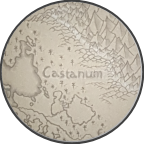
More about Castanum
Social:
Geography:
Military:
Trade:
Religion:
Magic:
Surunghat
Surunghat is a total mystery, inhabited by strange and elusive forest people. We know that some parts of their mythology is shared with the folklore of Feinland but who inspired who we do not know. They live in some form of hierarchical community but the structure is unknown as no one has ever been allowed to study them. The region is rich enough in both wildlife, farmland and fish and they are known for their huntsman skills, but noone has ever seen them grow the lands. The region is largely uncharted and the richest stories we have of this region and its poeple comes from their neighbours in Pisifera, the small independant region called Abelia and from Lukka Kadesh. They all describe the locals as savage beasts engaging in strange and dark rituals, plundering rather than growing, stealing rather than producing. Maybe this is true and actually what those neighbours have indeed experienced, but this only describes some of the tribes. Some live in small villages, many on the coast and appear to be way more peaceful and domestic, but we don't have a lot of stories from inside Surunghat, so it remains fairly speculative what goes on in the swamps or the enormous forests of Surunghat.

More about Surunghat
Social:
Geography:
Military:
Trade:
Religion:
Magic:
Ushar
Home of the fabled, feared and terrorising Fenlins. The fenlins stand six feet tall or higher and are amongst the tallest races in Ardensis, they are also amongst the most hostile and feared for good reasons. They live in tribes ruled by a warlord, the rule is total and only ends when the warlord is killed by the next aspiring warlord. There is absolutely nothing but raw chaos and anarchy governing these tribes and their roaming and raids have no coordination whatsoever. The only major city is Eiben in the North Eastern corner of the region with some kind of rule and governance but even here the rule of the strongest applies. The warlords and their clans that inhabit Ushar are all about honour with a capital H. They have feuds that go centuries back and continue to fuel the fire for the coming generations. They abide by an honour codex that they have never explained to any stranger still alive, so we have no record of this codex, but it appears to be present in everything they think, say and do.
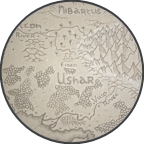
More about Ushar
Social: The same way cuddling a porcupine can seem social to some... How they are amongst themselves, their honour code and what governs their hierarchy is unknown. There is no real citylife in Ushar and even Eiben is empty at times. The Fenlins do not hole up and are always on the move and as a consequence most of the villages and cities are simply campsites with no permanent residents. Anyone invading Ushar would need a formidable force and you would need to locate the Fenlins as well, if they didn't find you first.
Geography: A major river system cleaves the land called the "Elcon River", easily confused with the river with the exact same name in Kadus on the other side of the mountains. In the North the land rises into the mighty Undabhur Spires mountain range. The central and eastern part of the region is covered in huge, dense and old forests with no real roads and far in between the settlements. To the west is the coast and the Albrek Peninsula where some of their favourite prey lives. Unlike the Fenlins themselves, the weather in Ushar is extremely fair with little temperature variation throughout the year, so they have little need for housing and shelter and most of the time they live in the open, always ready to move on.
Military: It is said that "A toddler with a spoon in his hand can kill you, if it is Usharian". They have no military at all, but in Ushar every man and woman are formidable warriors in their own right. They have no horsemen, archers or machines of war but make up for it with an insatiable thirst for combat and a readiness for violence unparalleled in Ardensis. There are no records of their actual numbers, they always appear in smaller warbands ranging from 20 to 200 Fenlins. To the luck of Albrek and the rest of Ardensis they seem utterly incapable of organising any coordinated effort when it comes to conquest. Invaders in Ushar will however experience that they are quite capable when it comes defending their territory. When the Aurean emperor in 1834 BGS attempted to subvert the Fenlins and conquer Ushar he found out the hard way that the Fenlins are quite capable of organising a defence of their homelands. After 2 years of guerilla fighting in the mountains and the forests of Ushar, the emperor limped back to Aurea with a decimated army barely holding it together. The Fenlins pursued them all the way back to the borders of Castanum picking off more troops and weakening the morale of those still alive, and then they went back home. No one has since then attempted any invasion into Ushar.
Trade: Most of the time they simply take what they want and there are plenty of prey in the surroundings. Apart from Eiben there are no major cities or roads in this wild land. There is an old cobbled road that runs from Mudan'hegang through Partizansk and all the way to Mudan'jiing but it was most likely built by others, the Fenlins are not, and have never been builders.
Religion: Unknown. Unlikely, but nothing is known.
Magic: The last magical beings in this region, either got slaugthered by the Fenlins or ran away screaming, several centuries ago.
Nibartus
Nibartus is a huge mountain-pass region that separates the Kel'arathir mountain range from the Undabhur Spires. The locals live in tribes ruled by elders, although people don't really tend to grow old in this region. It is a harsh, jagged terrain resembling the backlands of Mitra, deadly for people who don't know their way around. The folks from Nibartus have inhabited this region even before the Aurean empire, and have faced the Fenlins as well as other invaders countless times. Centuries of abuse from other races and nations in the neighbourhood has made them extremely tough and self reliant. It is hard to understand what they could rely on at all, in this barren rockland with only a few patches of green, but they are survivalists, skilled like no one else in Ardensis in mountain life. They know where the water is, and there is a surprising amount of smaller critters as well as top predators in the mountains that they can hunt. The Nibartians are also not shy of attacking and robbing anyone passing through the area, they are capable of taking on quite large groups, sniping from mountain vantage points and ambushes in chokeholds are their speciality. Unlike the Fenlin’s they don't go looking for combat and violence and there is no warrior code among them, but they go on raids when their needs demand it.
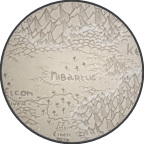
More about Nibartus
Social:
Geography:
Military:
Trade:
Religion:
Magic:
Kel'eras
Kel'eras is officially a part of the Elexian Empire, the locals are mostly just a part of themselves, they are mountain folks. At the outer frontier of the empire Kel'eras has strategic importance to the empire and they have several forts, garrisons and outposts in Kel'eras, mostly to dissuade their northern neighbours in Kel'bron and at the same gather intelligence for a possible invasion of Kel'bron. The locals never interfere or aid the military stationed here, they stay away from them at all costs. There is no hate, the locals understand that they have been subverted by an empire and they do pay yearly tribute, but they are acutely aware that the military is not here to protect them, they are here to protect the interest of the empire and one such interest is that Kel'eri remains under firm control. In fact there are far more troops stationed here than in the Kel'sythian jungle region. Kel'eras is an area surrounded by mountains and heavy hills, hard to take and easy to hold, so the empire keeps its entire northern defences in Kel'eras.
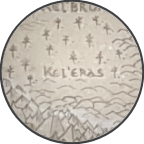
More about Kel'eras
Social:
Geography:
Military:
Trade:
Religion:
Magic:
Kel'bron
Due north of Kel'eras lies Kel'bron, continuing north we find the dreaded Naked Desert and anyone surviving the desert will find themselves in the equally dreaded Tinok'tali Wasteland. Short version, if you in Kel'bron, don't go North. But there's isn't much staying for either, the locals are hard to engage with and they are ever suspect and wary of strangers. Far into the mountains of Kel'arathir we find their biggest and only city called Braken. Braken lies at the top of a mountain pass that lead into Kel'arathir, you must go through Arathir Pass to get into the area, while the end of the pass ends with a wall of mountains. Braken has never been taken by invaders, no one has made it through Arathir Pass and past Arathirs Gate, the only way in. Traders that are allowed in the area, tell stories of a capital completely devout of fun and leisure, and the locals do not accept haggling, and all together grey and colourless people. They do however also tells stories of the great mines surrounding Braken and the wealth being dug out of there, given the place full merit, at least in the eyes of merchants. They do not travel much, local merchants sometimes take goods out of Kel'bron and trade with the empire, but most trade is by way of traders coming to Braken or to one of the trade posts along the way through Arathir Pass. All the main activity of Kel'bron is in the mountains, they do control the entire area, barren windblown plain, all the way to the Central Mountains. Lying in between two major mountain ranges the area has very little rain and only the hardiest of crops can grow on the dry plains of Kel'bron. They do pursue farming but are to some extent relying on foods from the outside.
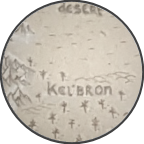
More about Kel'bron
Social:
Geography:
Military:
Trade:
Religion:
Magic: